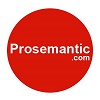Formulations and characteristics of cookies made of organic red bean, soybean, and sago composites-based flour
DOI:
https://doi.org/10.30867/jand.v1i1.44Abstract
Cookies are a food product favored by people of all ages. Meanwhile, composite flour is flour from several types of raw materials, such as tubers, nuts, cereals with or without wheat flour, or cereals with or without wheat. The composite flour is used as a raw material for food processing, such as bakery and extrusion products. This research was an experimental study using a completely randomized design (CRD). The organoleptic test was employed to examine the smells, tastes, textures, and colors of organic red bean, soybean, and sago composites-based flour. The physical properties test examined the swelling power test. Then, the collected data were analyzed using the analysis of variance (ANOVA) from a completely randomized design to determine statistically significant treatments. If a relationship had been founded, the next step was continued to Duncan’s test. The results of this study indicated that the addition of composite flour in the cookies significantly brought different effects. Formula 1 with the addition of 30% composite flour had the best taste, odor, and texture. However, its color was not better than formula 2, without any addition of composite flour. This study suggests that a further intervention formula should investigate the mixing of the resulted colors or use natural dyes to improve the color of cookies
References
Atchibri, OA, Kouakou, TH, Brou, KD, Kouadio, YJ, Gnakri, D 2010, ‘Evaluation of bioactive components in seeds of Phaseolus vulgaris L. (fabaceae) cultivated in Côte d’Ivoire’. Journal of Applied Biosciences 31: 1928 – 1934
(APTINDO). Asosiasi produsen tepung terigu indonesia 2016. Laporan APTINDO Tahun 2016. Jakarta.
Hayati, N., Rini P dan Abd. Kadir. 2014. Preferensi Masyarakat terhadap Makanan Berbahan Baku Sagu (Rottb) sebagai Alternatif Sumber Karbohidrat di Kabupaten Luwu dan Luwu Utara Sulawesi Selatan. Jurnal Penelitian Sosial dan Ekonomi Kehutanan. 11(1) : 82 -90.
Cahyadi, W., 2007. Kedelai khasiat dan teknologi, Jakarta: Bumi Aksara.
Konvacs, G 2008, Ancient cereal as a source of healthy organic food, Diakses pada 1 Januari 2012.
Pomeranz, Y 1991, Functional properties of food components, 2 nd ed. pp.27-28, Academic Press, New York.
Widowati, S. 2009. Tepung Aneka Umbi Sebuah Solusi Ketahanan Pangan. Balai Besar Penelitian dan Pasca Panen Pertanian.
Downloads
Published
How to Cite
Issue
Section
License
Copyright (c) 2022 JAND: Journal of Applied Nutrition and Dietetic

This work is licensed under a Creative Commons Attribution-ShareAlike 4.0 International License.











